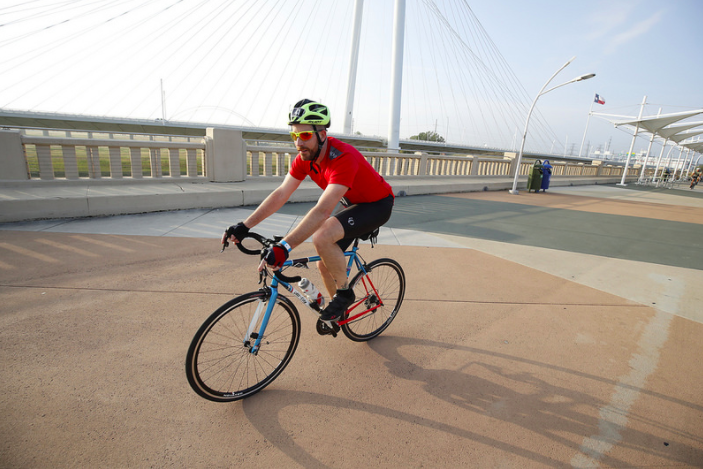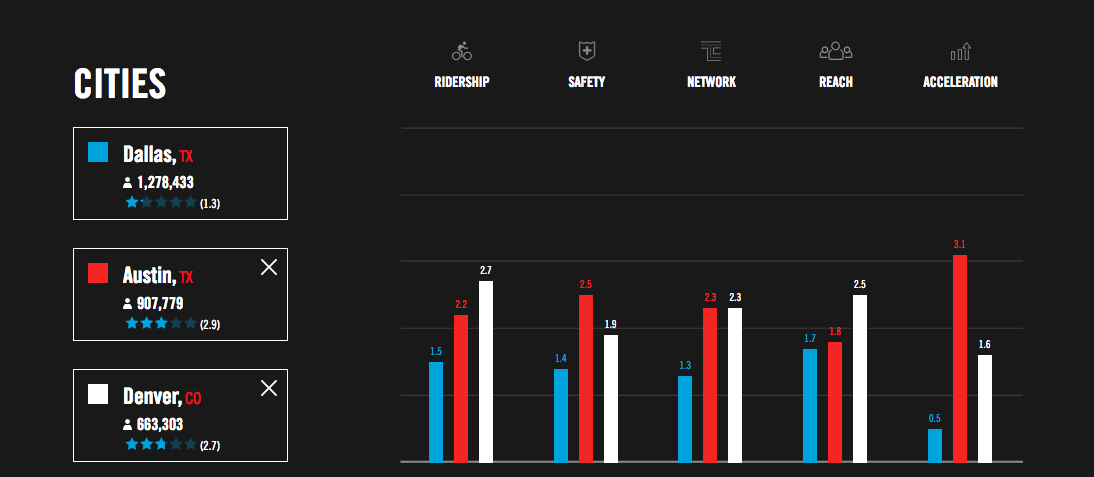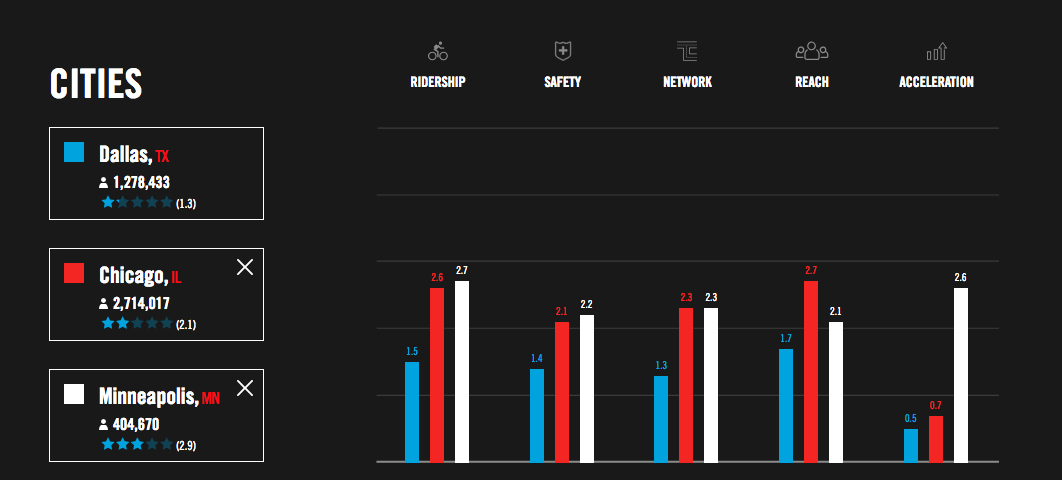One of the oft-noted ironies of Dallas becoming the de facto bike share capital of the U.S. is the fact that, traditionally, the city has not been hospitable to anything on two wheels. In fact, a positive side effect of the bike share boom—the National Association of City Transportation Officials estimates a 25 percent increase in bike share trips taken in the U.S. in 2017—is an increased awareness that many cities lack suitable infrastructure for bicycles. Just look at how many share bike riders here are forced to stick to sidewalks to avoid being squashed against the windshield of a pickup truck.
A new report from PeopleForBikes, a pro-cycling group backed by the bicycle manufacturing company Trek, shows just how far we have to go to make Dallas a truly bikeable city. Using data from the U.S. Census and several in-house and outside surveys, PeopleForBikes rates cities on five criteria: ridership, safety, network, reach, and acceleration, a measure of how quickly a city is working to build out bike infrastructure and encourage cycling. You can then compare how your city fared against others. For example, here’s Dallas (ranked at No. 292) stacked up against Austin and Denver.
And against Chicago and Minneapolis:
On top of pointing out what we already know about how much Dallas sucks at encouraging bike use, this report illustrates a better way to measure progress than, say, “miles of bike lanes installed.” As the longest light-rail network in the country has taught us, length is not necessarily a good way to judge a transportation system’s effectiveness. “Network” and “reach,” as measures of how many people in the city can use a bike to get around, are much more useful.
That’s not to say Dallas doesn’t need more bike lanes. It does. The city is, by most accounts, decades behind peer cities in dedicating lanes for cyclists. But the most distressing stat in this new report concerns “acceleration,” the metric judging how much the city is working to accommodate cyclists.
We should be encouraged by what Dallas is doing, by the money from last year’s bond package dedicated to “complete street” reworks, and to the completion of The Loop, a 50-mile connection linking the city’s major trails. Is that enough? As the number of cyclists in the city continues to grow, matching an appetite for robust, car-free urban environments, it’s probably not.







